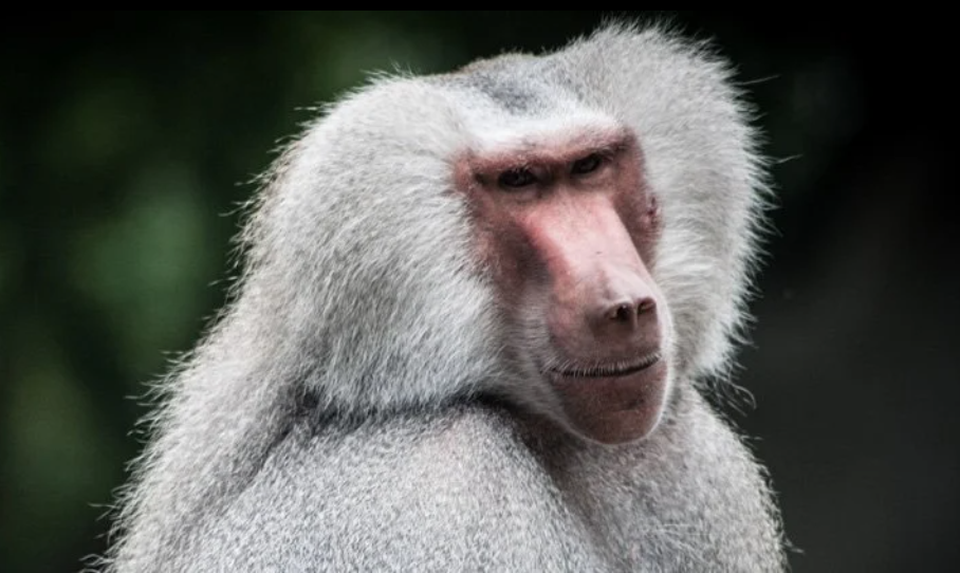The skulls of two baboons, mummified more than 3,000 years ago, have helped narrow down the location of a legendary “rich land”.
 Advertising by DTads
Advertising by DTads
Known as the land of Punt, or “God’s land,” this remote, magical realm may have actually existed beyond its famous mythology, although no physical remains have been identified. find.
Ancient texts and drawings have convinced many archaeologists that the land of Punt was located somewhere around the Red Sea and played a key role in the development of the spice routes, also known as The maritime silk road, which first connected Eastern and Western cultures and trade.
Researchers now believe that a species of sacred monkey, known as the Hamadryas baboon (Papio hamadryas), was an important factor, contributing to the increase in trade in the Red Sea region during the second millennium B.C.
The ancient Egyptians apparently revered Hamadryas baboons. The god Thoth, the supreme being of the Moon and wisdom, was sometimes represented as a baboon with statues of him at temples. Ancient Egyptians also buried mummified baboons in tombs.
As such, the ancient Egyptians traveled great distances to acquire live baboons.
The land of Punt is a major habitat for Hamadryas monkeys and baboons. Illustrations show the animals being transported back to Egypt on boats and sometimes by land. Yet the ancient animal trade is often overlooked when historians discuss the mysterious location of Punt.
Tracing the origins of many baboon mummies found in ancient Egyptian temples and tombs, researchers now believe that the Hamadryas species originated in an area spanning Ethiopia, Eritrea, Djibouti and Somalia, Yemen.
“This result is a testament to the great seafaring capabilities of Egypt during the second millennium BC. It also corroborates the balance of scholarly conjecture about Punt’s location,” the researchers said. rescue said.
In the past, experts have argued that the legendary land of Punt is located near the coast of Somalia. While others think they continued east toward Eritrea or included more of the Arabian Peninsula, such as present-day Yemen. There are even those who believe that the land stretches as far as Uganda or Mozambique, although this view is more strongly opposed.
Anthropologist Nathaniel Dominy from Dartmouth College explains: “Many scholars consider the trade between Egypt and Punt to be the first long maritime connection in the trade network known as the spice route, which would form geopolitics for millennia. Baboons were at the center of trade, so locating Punt was important.”
In addition to examining the baboon mummies, the researchers analyzed tissues from 155 modern baboons from 77 sites (which exist within the current hypothesized location for Punt). Comparing the chemical composition of the monkey’s teeth, bones and hair, the team was able to find out where they came from.
Chemical signatures left behind in animals’ remains can provide information about where they lived. For example, the mixture of strontium isotopes changes depending on the food they eat and is fixed in tooth enamel from an early age.
Analyzing these chemical signatures, the new findings show that both hamadryas mummies, codenamed EA6738 and EA6736, were not born in Egypt. Instead, the authors suggest that the mummies came from a location in Eritrea, Ethiopia or Somalia.
One of the hamadryas monkeys, EA6738, appears to have lived in Egypt for many years. Its original home was found squarely within the species’ natural range, right where Punt is believed to exist.
The remaining monkey, EA6736, died shortly after arriving in Egypt. Just a few days or months in a new land.
Because their canines had been removed, the authors suggest that these monkeys lived around humans, possibly as royal pets, fruit harvesters.
In contrast, five mummified baboons of a different species, traded across Africa several hundred years earlier, were apparently born and raised in Egypt under very different circumstances.
Since Egypt is not believed to have had any monkeys, the authors argue that it provides evidence that baboons were kept in captivity at this time, possibly in Memphis, an ancient capital in Lower America. Egypt, northwest of the Red Sea.
What the monkeys were used for is another matter, but they appear to have lived a harder life than the idolized Hamadryas monkeys. The mummy shows the remnants of prolonged indoor confinement and vitamin D deficiency.
“Leaving aside the puzzling question of why the ancient Egyptians revered P. hamadryas, the degree of reverence was sufficient to justify the importation, breeding, and mummification of it and another species,” the authors write.
Although often forgotten by historians and archaeologists, a baboon mummy from ancient Egypt is believed to be the last remaining clue to the long-lost land of Punt.
“For more than 150 years, Punt has been a geographical mystery. Our analysis is the first to show how mummified baboons can be used to inform long-standing debate this”, the researchers emphasized.





